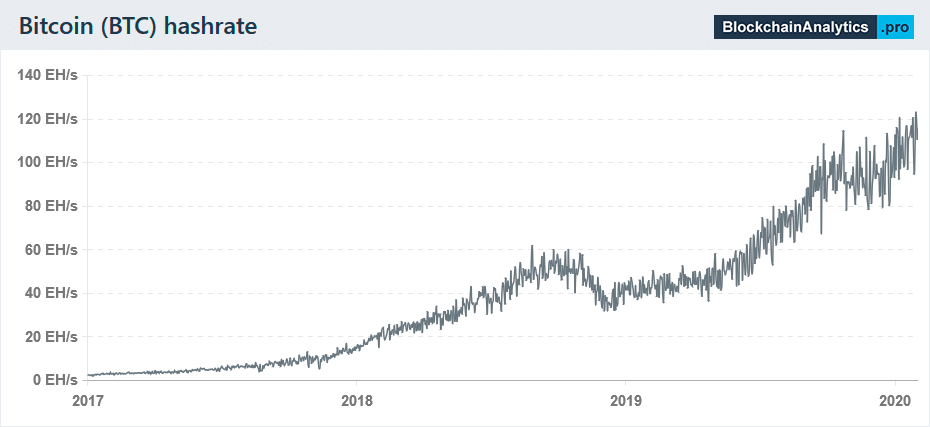According to research by BlockchainAnalytics.pro, Bitcoin’s energy consumption in 2019 exceeded that of the whole of New Zealand.
Blockchain Analytics estimates that 2019 ended with an average annual electricity consumption of about 43 TWh, which is slightly more than New Zealand’s annual demand, and slightly less than that of Portugal (49 TWh), Romania (50 TWh) and the Czech Republic (59 TWh).
This figure is also showing strong growth compared to previous years. In fact, in 2018 consumption was less than 29 TWh, more or less the same as in Nigeria, while in 2017 it was only about 5 TWh, the same as in Jamaica.

Moreover, according to conservative estimates, in 2020 Bitcoin’s energy consumption will exceed 70 TWh, roughly the same as that of Chile, which has 18 million inhabitants.
Just by projecting the current data, the annual consumption would be 56.3 TWh, almost like that of the Czech Republic, however, this figure seems likely to grow in the coming months.
The assumptions on which these estimates are based are very conservative, which means that these figures are also conservative: it is possible that the actual consumption may be even higher.
The fact is that Bitcoin is becoming increasingly popular and more valuable, and seeing that the cost of mining depends on the price (and not vice versa) its continuous increase in value year after year inevitably leads to higher expenses for miners, caused by higher electricity consumption.
In addition to this, there is a continuous growth in hashrate, which is due mainly to the increased efficiency of the ASICs.

For example, in the now distant 2016, Bitmain launched the Antminer S9, which consumed 100 watts to produce a terahash per second (100 W/TH/s).
In 2018 the Antminer S15 was released, which reduced power consumption to 57 W/TH/s, while the current Antminer S17 consumes only 40 W/TH/s. This leads to an increase in hashrate, as the TH/s that can be generated increases with the consumption.

Although in theory, this increase in efficiency could reduce electricity consumption, in reality, the increase in Bitcoin’s annual average value inevitably leads to an increase in electricity consumption, given that the spending power of the miners increases as a result, allowing them to buy more electricity to consume.
In fact, the consumption growth curve moves in line with the increase in hashrate, although it remains to be seen what will happen with the halving in May 2020 which will cut miners’ rewards in half.
However, it should be noted, for example, that after the last halving, in July 2016, the reduction in hashrate was minimal and only temporary, and by August it had already returned to pre-halving levels. Hence it is difficult to imagine that the next halving could actually significantly reduce Bitcoin’s energy consumption.




